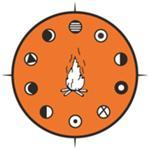Easing of Containment Measures (COVID-19): Necessary Involvement of First Nations Authorities on Their Territories Français
WENDAKE, QC, April 28, 2020 /CNW Telbec/ - From the outset, the Assembly of First Nations Quebec-Labrador (AFNQL) wishes to express its support for the Innu Nation's position and asks, like the Innu Nation, that any decision aimed at easing containment measures be made in concert with the First Nations on their traditional territories.
Furthermore, the AFNQL wishes to point out that the fierce struggle led by the leaders and all the personnel responsible for emergency measures, health, social services and public safety of many First Nations in Quebec is likely bearing fruit to this day. With less than thirty cases that have now tested positive where most are recovered and zero deaths, we note with great satisfaction and pride that the urgent taking charge of communities for the well-being of their population is working in a remarkable way, despite the pitfalls that some have encountered in terms of funding of measures, harmonization and linkage with the Quebec network and the federal government.
Furthermore, the AFNQL welcomes the decision of the Minister of Education and Higher Education who announced yesterday that any decision regarding the conditions for the gradual resumption of elementary school classes in First Nations and Inuit communities remains under the authority of these communities.
In addition to the education sector, and although Minister Roberge's announcement shows respect for the exercise of our jurisdictions, the AFNQL reminds that the involvement of First Nations leaders in the decision-making process of easing any containment measures remains fundamental and essential. The reason is simple: the high prevalence of numerous risk factors* that make our populations much more vulnerable to the pandemic. Again, this is a matter of life and death.
The AFNQL has repeatedly reiterated that the rate of chronic diseases is higher among First Nations than in any other segment of society, that overcrowded housing makes physical distancing extremely difficult, if not almost impossible. "For example, how can measures be applied in a community like Kitcisakik, in the heart of the Anishnabe traditional territory (Abitibi), when there is no running water or electricity and only one sanitary block for the entire community? "asks the Chief of the AFNQL, Ghislain Picard. It should also be remembered that culturally, many elders remain with their families, in the presence of children.
"First Nations are among the most economically disadvantaged, but they will always put the health and safety of their families first. We have knowledge, ways and solutions that, like those of public health authorities, can contribute to foresee the worst in order to heal better, thanks to mutually invested efforts and concerted action in making decisions that are cautiously applied according to local realities," concluded the Chief of the AFNQL.
Regional commissions and organizations of the AFNQL are working to present the communities with model frameworks which they can use as a reference in the deployment of their local deconfinement measures.
*For a complete list of risk factors:
https://covid19.cssspnql.com/wp-content/uploads/2020/04/Facteurs-de-risque-COVID19-ENG.pdf
About the AFNQL
The Assembly of First Nations of Quebec and Labrador is the political organization regrouping 43 Chiefs of the First Nations in Quebec and Labrador. Follow us on Twitter @APNQL
SOURCE Assembly of First Nations of Quebec and Labrador

Alain Garon, [email protected], Communications Officer, Cell. : (418) 254-4620

Share this article